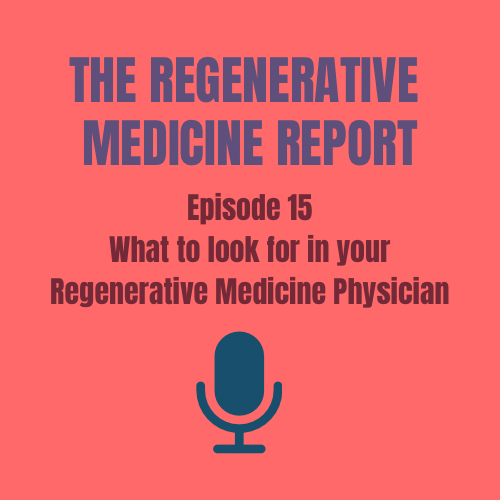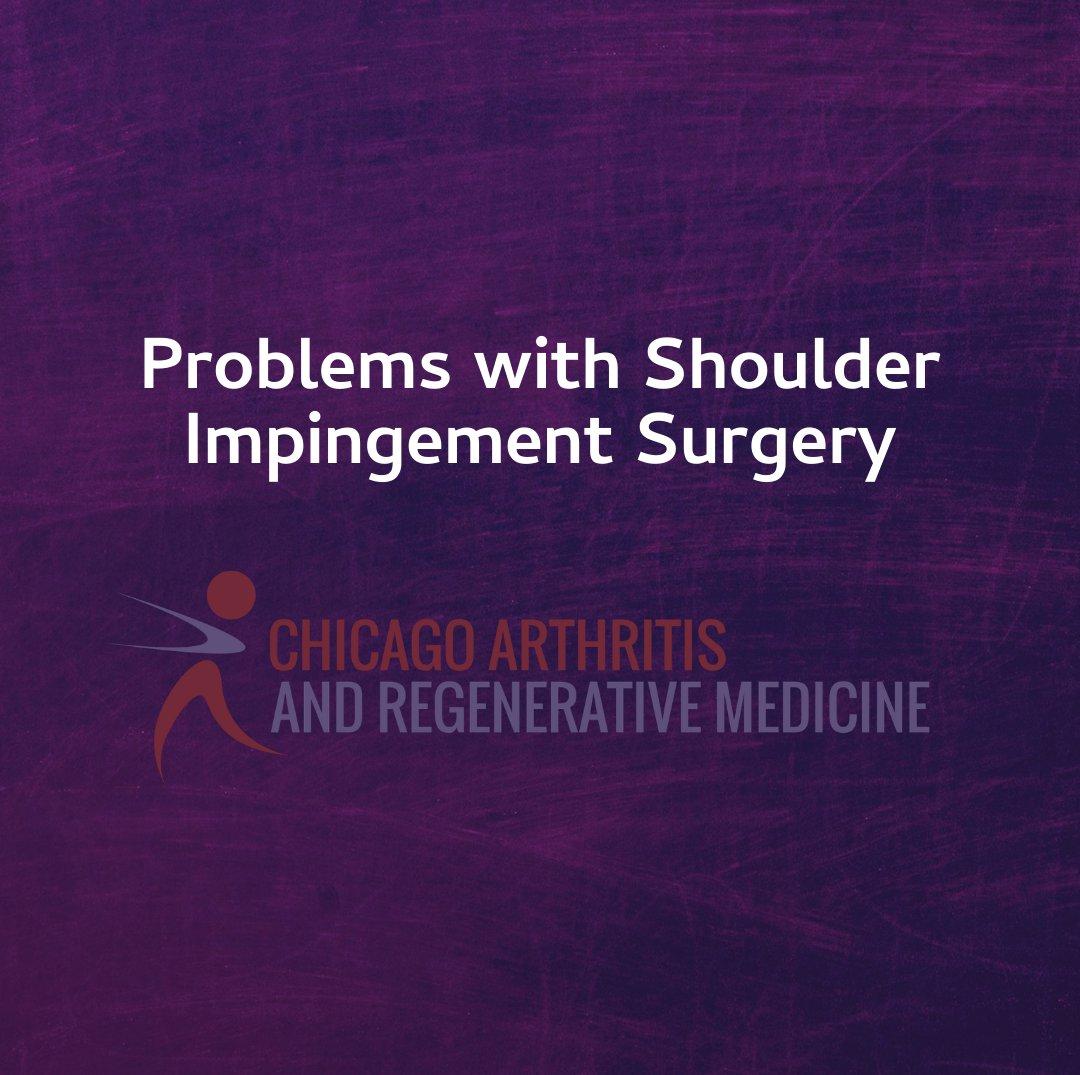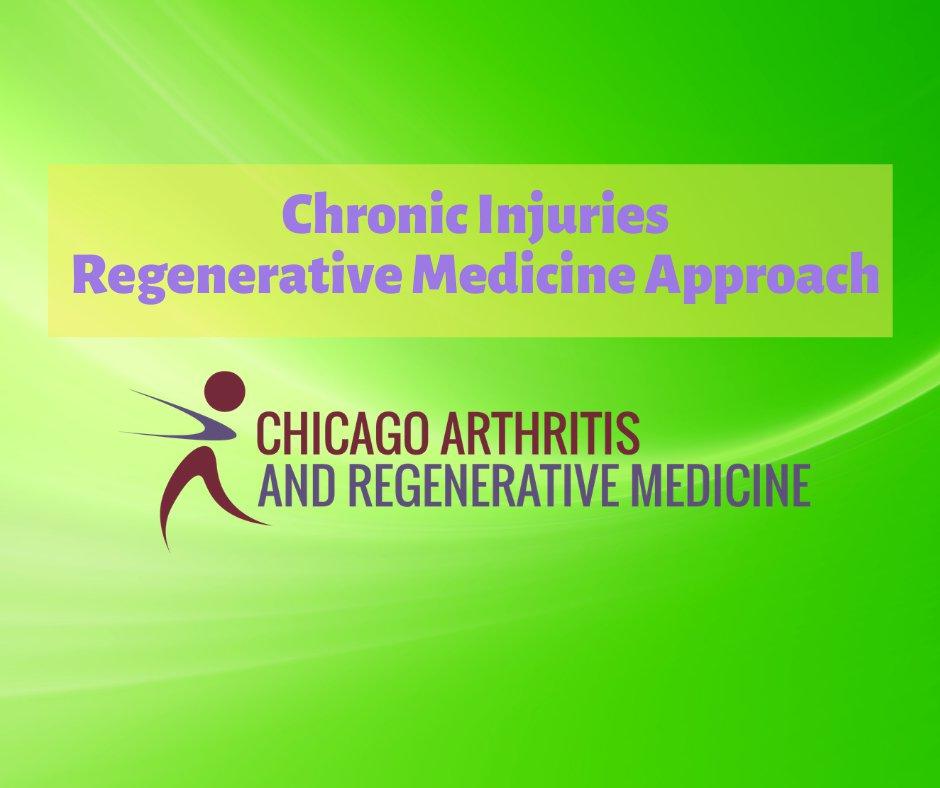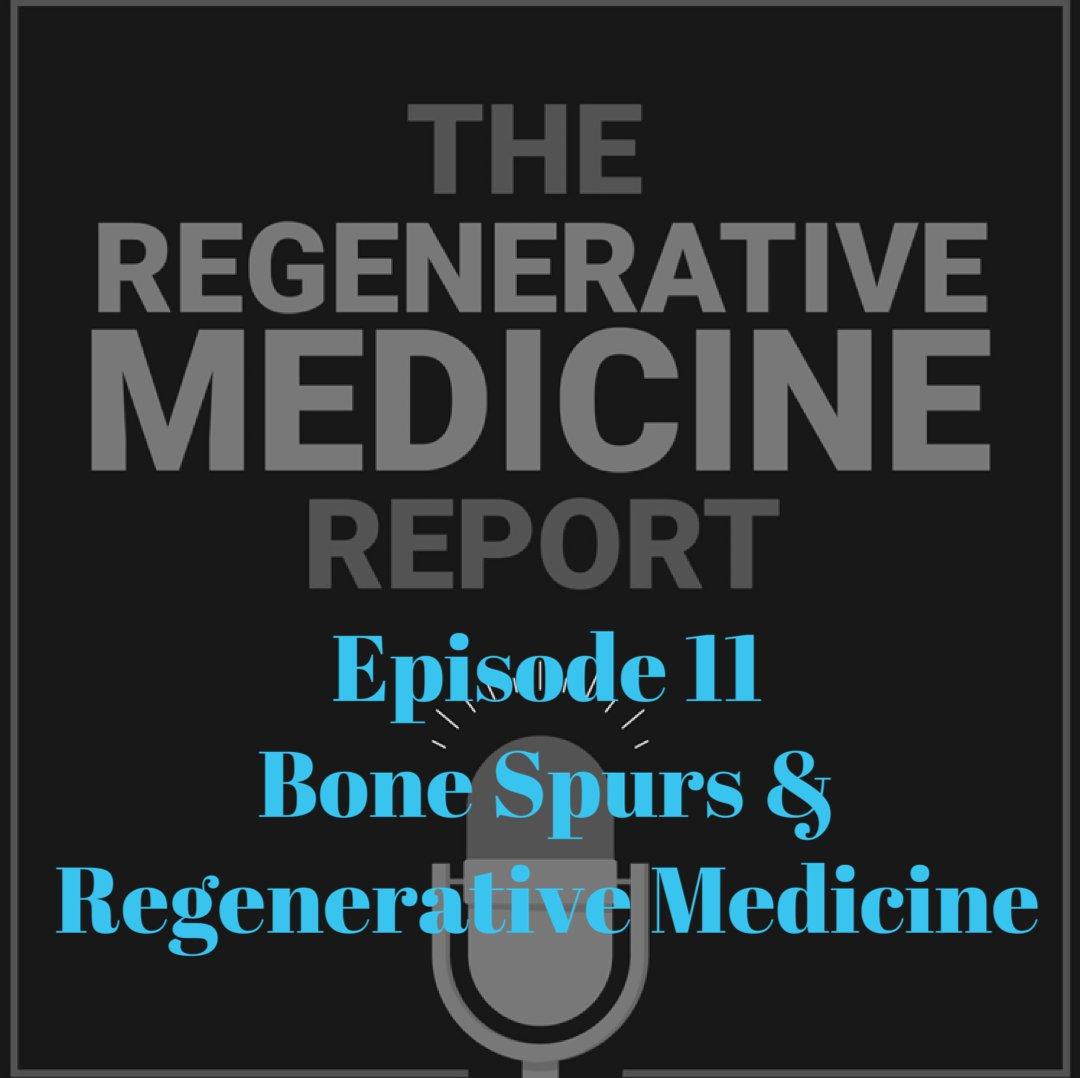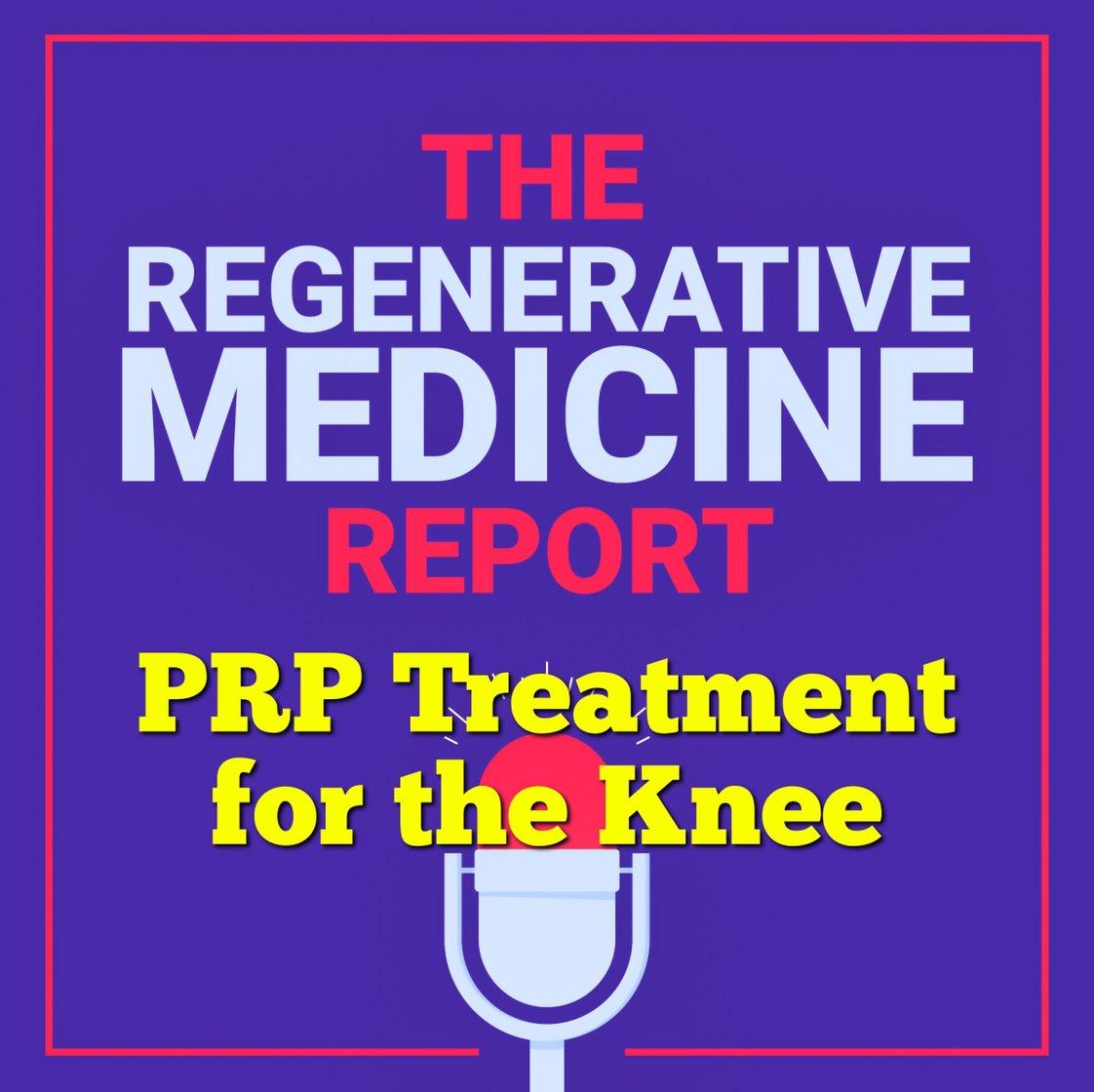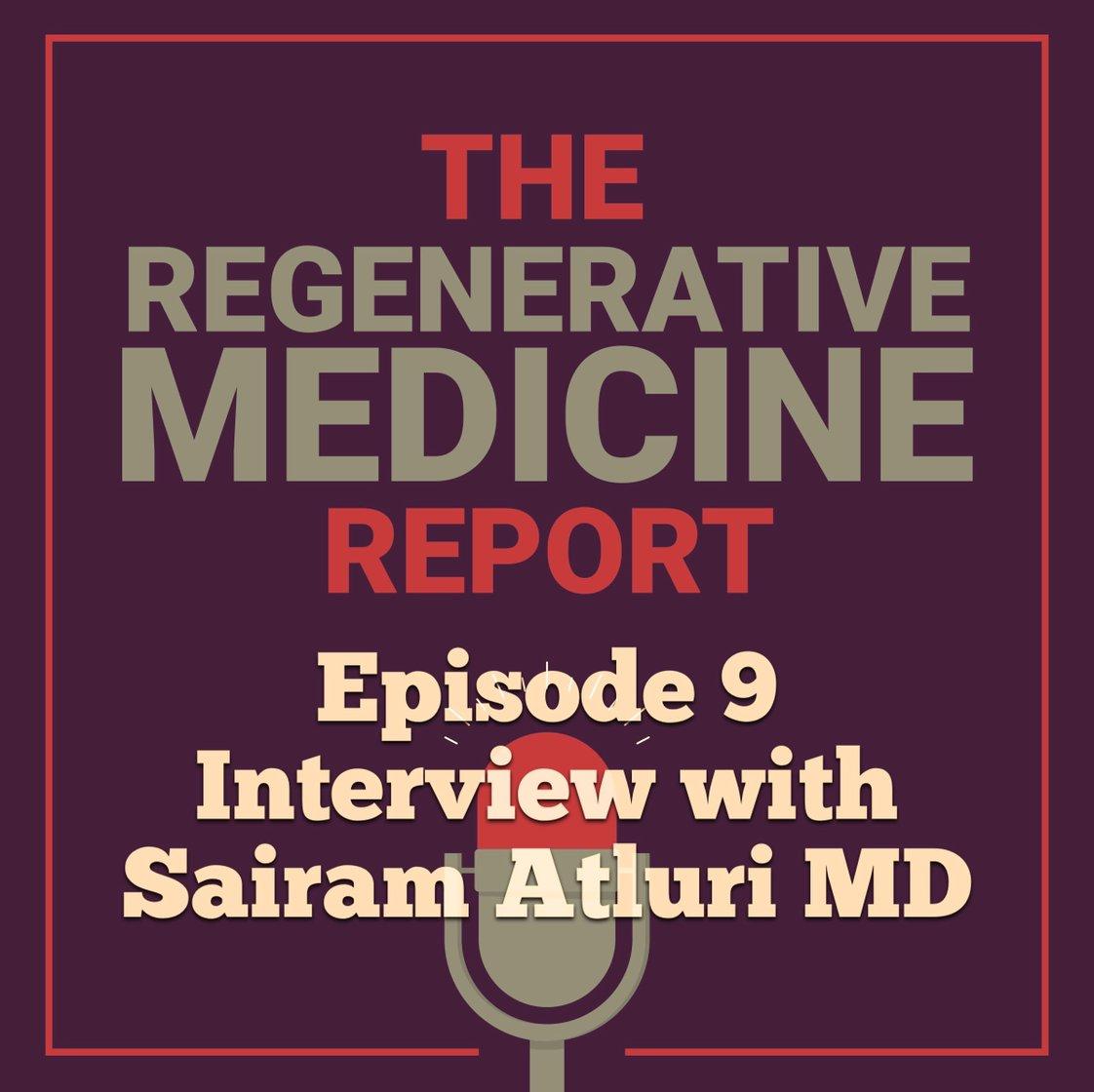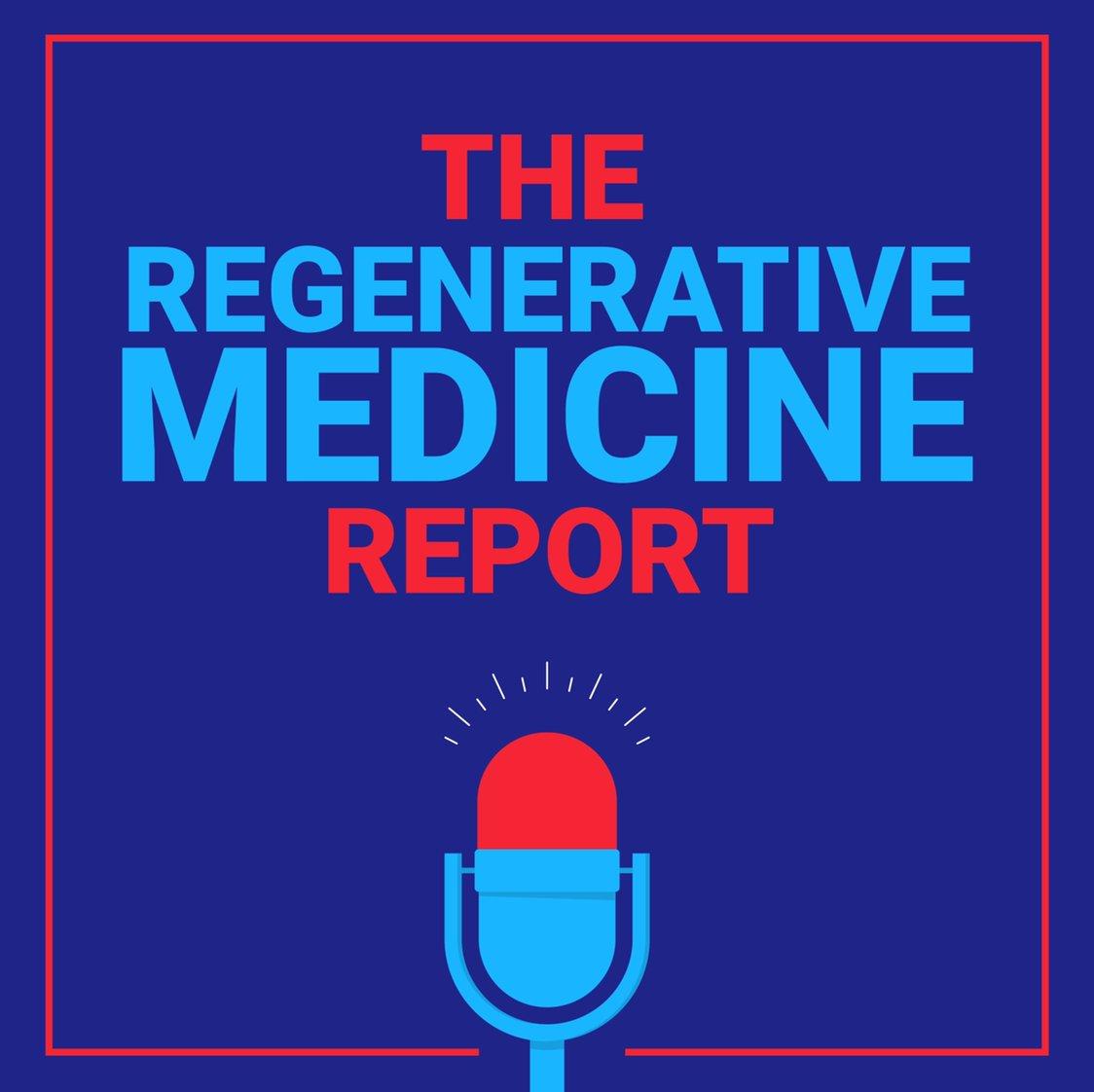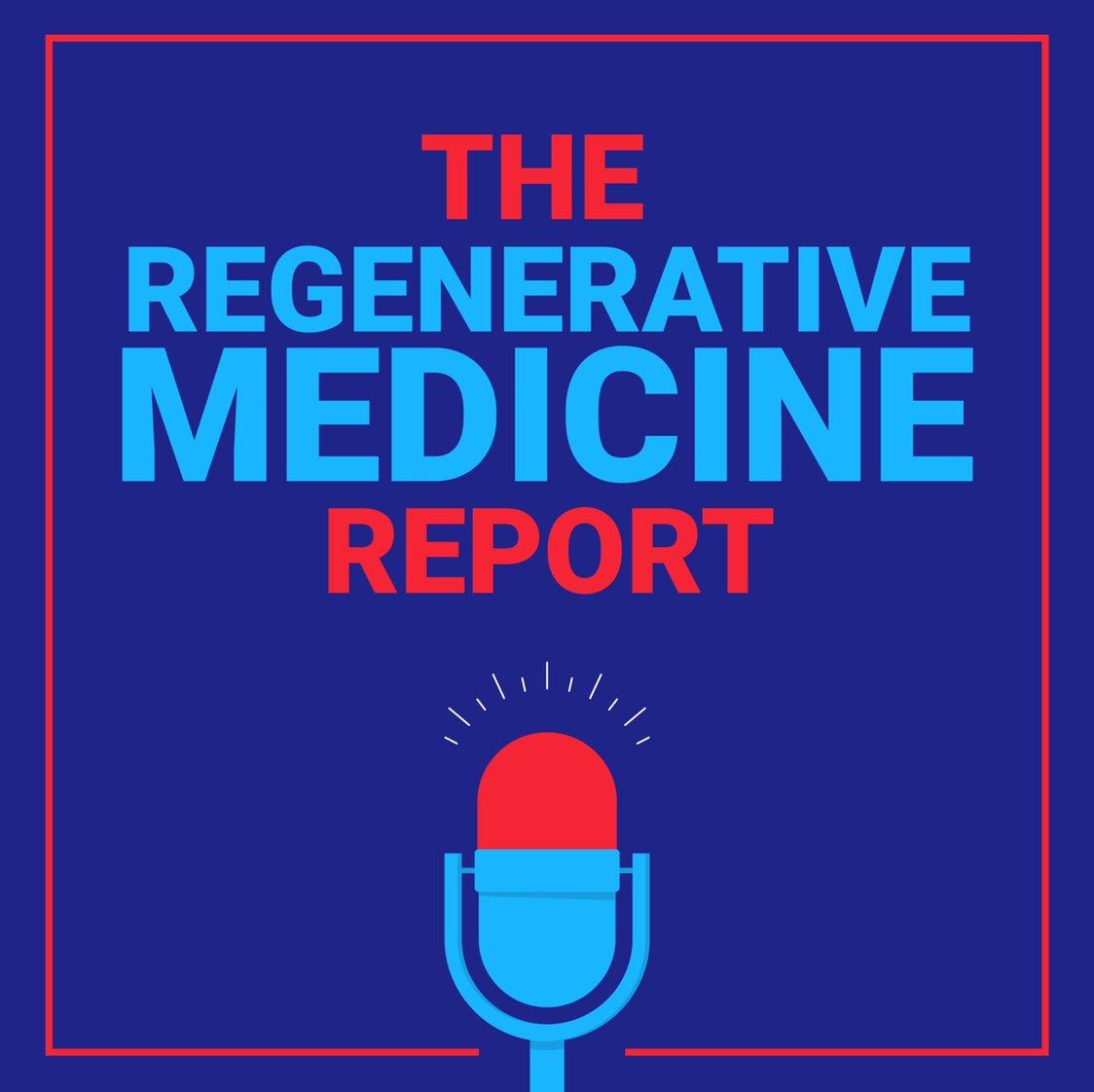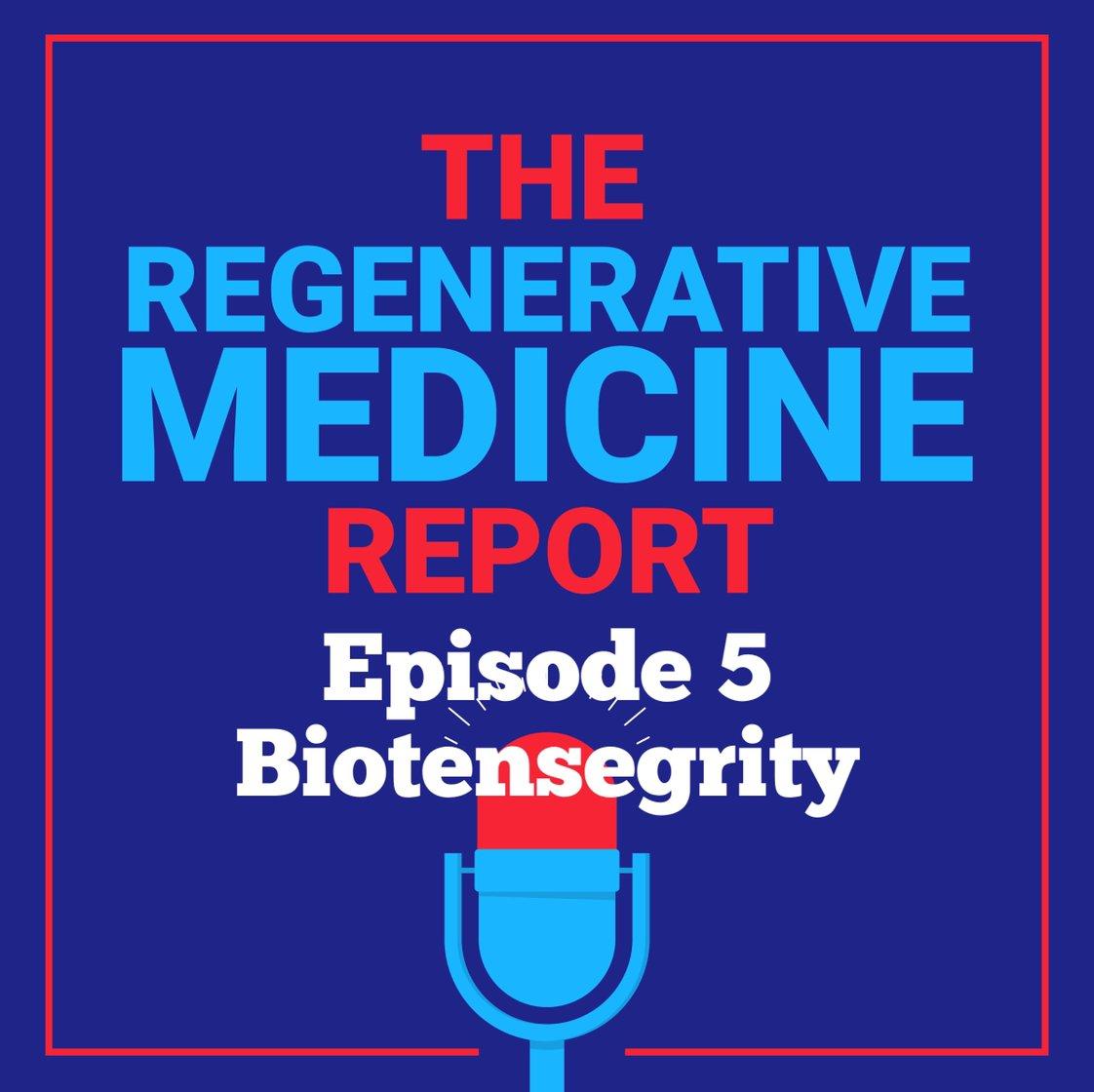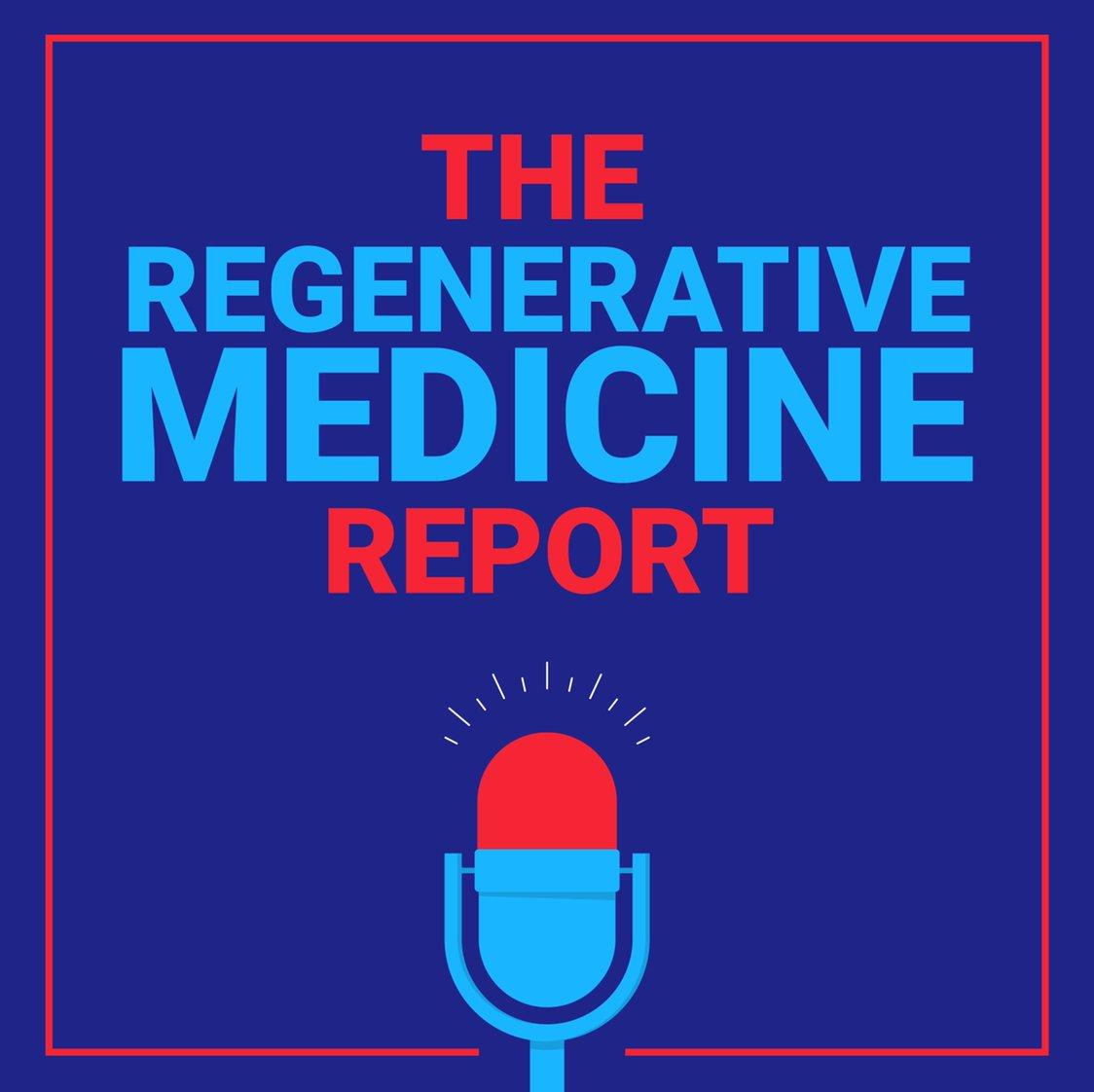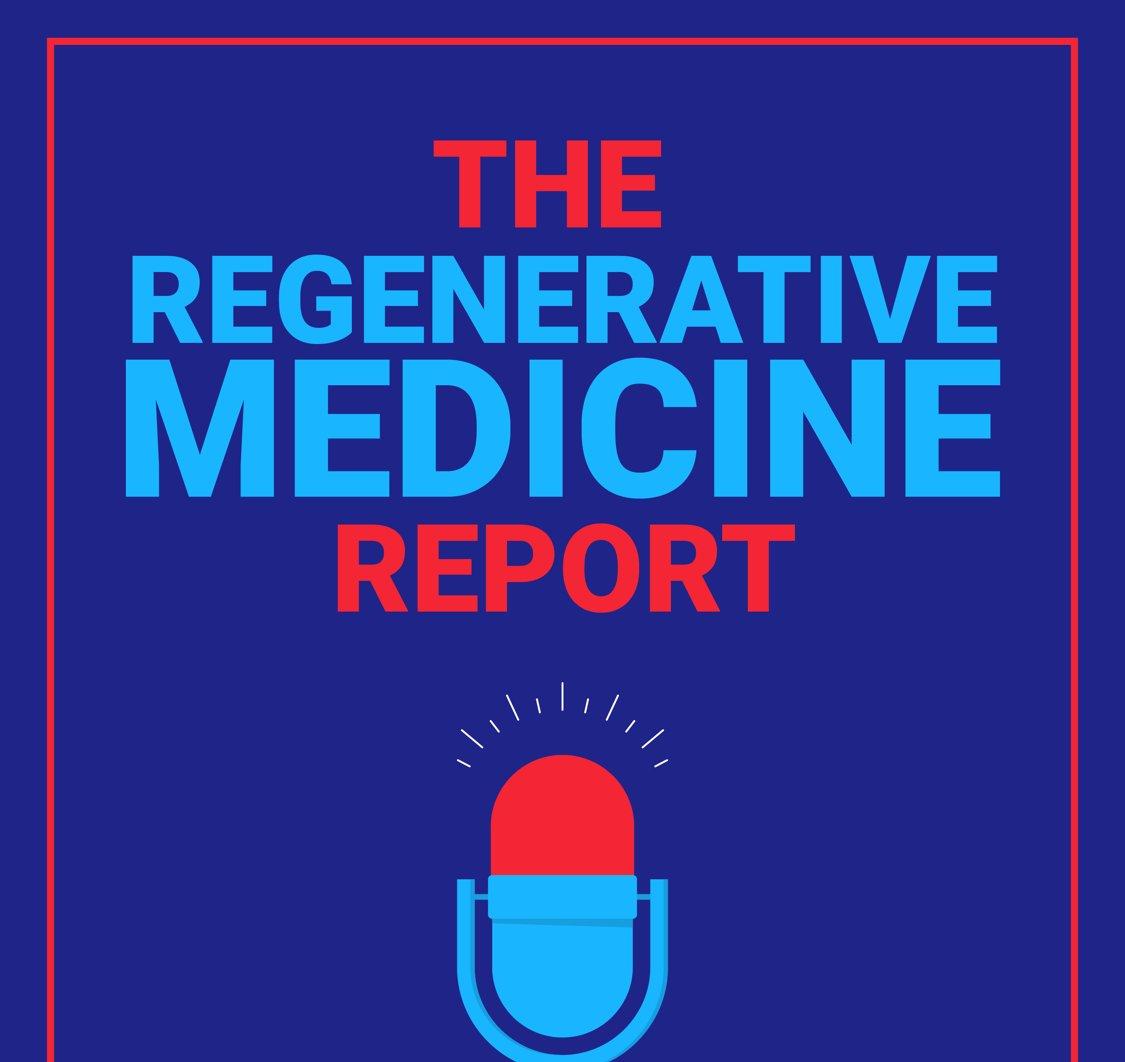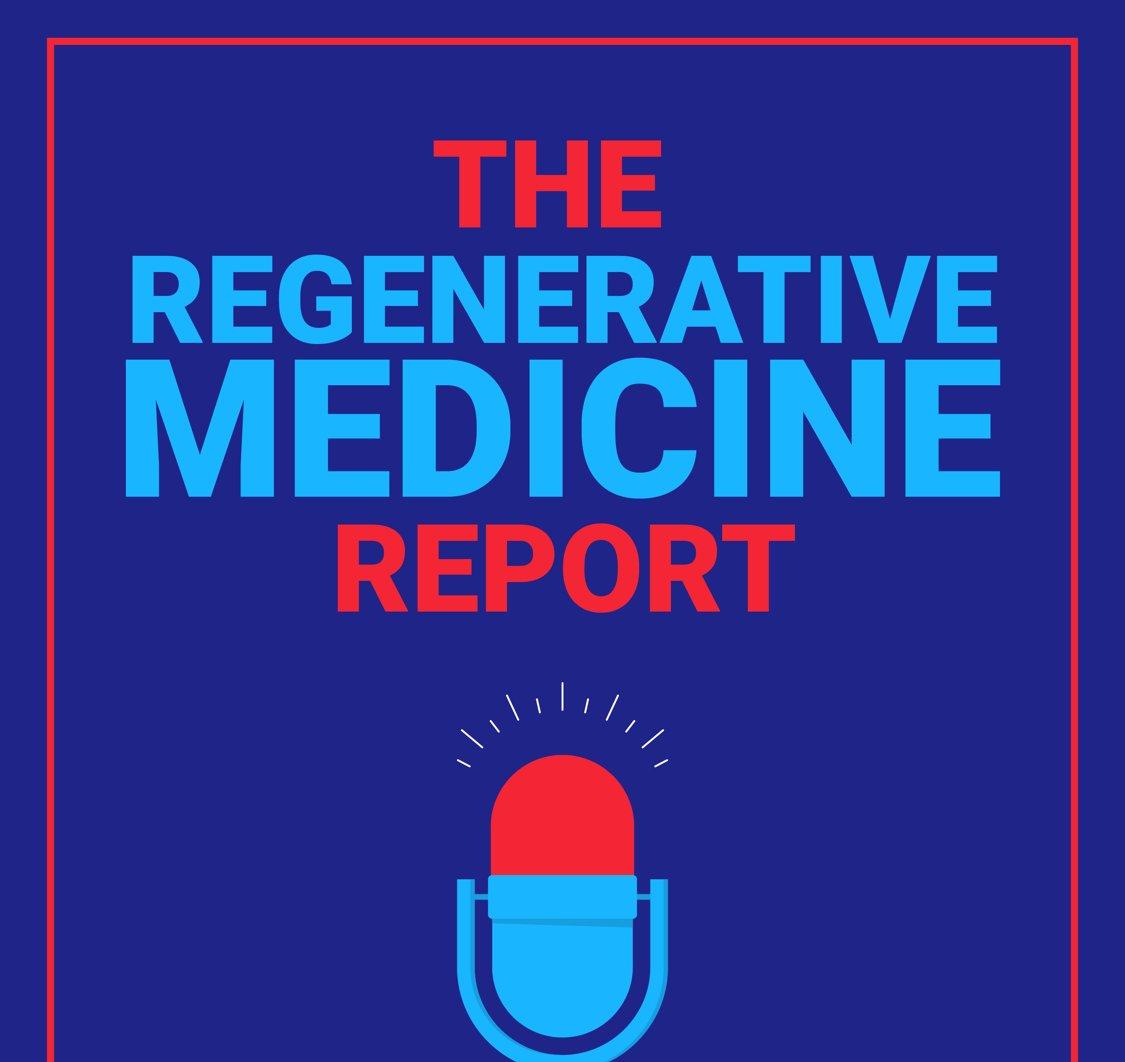Discover Regenerative Medicine Report
Regenerative Medicine Report

Regenerative Medicine Report
Author: Siddharth Tambar
Subscribed: 19Played: 307Subscribe
Share
© 2019 Chicago Arthritis
Description
Siddharth Tambar MD discusses cutting edge issues regarding the new and dynamic field of Regenerative Medicine. Topics discussed include stem cell, platelet-rich plasma, and prolotherapy treatments for arthritis, tendinitis, musculoskeletal and orthopedic injuries, and back pain.
21 Episodes
Reverse
Episode 21- Case Study: Bone Marrow Concentrate Stem Cells for Knee Arthritis Patient Background Dr. Siddharth Tambar, an expert in regenerative medicine and rheumatology, shares the case of a 46-year-old construction worker with progressive knee pain. Despite conservative treatments like steroid injections and anti-inflammatory medications, the patient continued to experience significant pain due to moderate osteoarthritis in his left knee. Diagnosis and Treatment Selection An MRI revealed not only moderate osteoarthritis in the medial joint but also bone marrow edema, or swelling, in the subchondral bone. This swelling can exacerbate pain and lead to further cartilage breakdown. Given the patient's condition and activity level, Dr. Tambar decided to use the patient's own bone marrow concentrated stem cells for treatment. Treatment Procedure The treatment began with a bone marrow aspiration from the back of the patient's iliac crest, taking samples from multiple spots for a better cell count. The bone marrow was processed on-site into a high concentration of stem cells and platelet-rich plasma. These were then precisely injected into the medial joint, medial collateral ligament, and the subchondral bone under ultrasound and x-ray guidance. Aftercare and Expectations Post-treatment, the patient experienced increased inflammation for a few days, managed with crutches and a knee brace. Due to his physically demanding job, he was off work for one week and then on light duty for another week. Improvement is expected within three to four weeks, with continued progress over six to twelve months, leading to pain relief and enhanced functional ability. Conclusion This case highlights the effectiveness of using bone marrow concentrated stem cells for treating knee osteoarthritis, especially when bone swelling is involved. Dr. Tambar emphasizes the importance of precise treatment and appropriate aftercare to achieve the best outcomes. To learn more: https://www.ChicagoArthritis.com
What's Causing Your Thumb Pain? The Importance of Thumbs Our thumbs are key parts of our hands. Opposable thumbs allow us to use tools and our hands more dynamically. When they hurt, it’s not just about the pain, but also the functional limitations it causes. Potential Causes of Thumb Pain Joint Issues Thumb pain can stem from joint issues. This can be due to wear and tear arthritis from overuse over many years, or inflammation from conditions like rheumatoid arthritis, gout, or other types of inflammatory arthritis. Generally, if your pain is worse with activity, it’s likely wear and tear arthritis. If it’s worse with rest, it’s likely inflammatory arthritis. Tendon Problems Several tendons around the thumb provide motion, range of motion, and power. Pain location can indicate which tendon is damaged. Pain on the backside of the thumb when extending it may indicate De Quervain’s tenosynovitis. Pain on the other side causing triggering or catching of the thumb may indicate an irritation of the flexor tendon, known as trigger thumb or trigger finger. Ligament Issues Ligaments connect bones and provide support and stabilization. Overusing your thumbs, such as from texting or computer use, or an acute injury from sports or work, can overstretch the ligaments, leading to joint instability and pain. Chronic ligament instability can also lead to arthritis. Nerve Problems Nerves supply sensation to the thumb and can get compressed or irritated, causing pain. For example, compression of the median nerve at the wrist can cause carpal tunnel syndrome, leading to pain in the thumb. Compression of the radial nerve can cause pain and tingling in the back of the thumb. Irritation of the C6 nerve root in the neck can also cause thumb pain. Diagnosing Thumb Pain As a physician, several key factors are considered to diagnose thumb pain: Symptoms What are your symptoms? Pain with specific activity, triggering in the thumb, numbness and tingling, or swelling can help direct the diagnosis towards joint, tendon, ligament, or nerve-related pain. Examination Tenderness during examination can indicate the source of pain. Joint tenderness, tendon tenderness, nerve compression, or swelling in the joint are important clues. Imaging Imaging can also be helpful. X-rays can show arthritis, while ultrasound can detect inflammation, joint instability, or soft tissue injuries. MRI is rarely needed but can be used for more subtle injuries. EMG or nerve conduction studies can diagnose pinched nerves at the wrist, elbow, or neck. Conclusion Based on symptoms, examination, and imaging, the cause of thumb pain can be determined. Treatment depends on the specific problem causing the pain. For more information on treating these issues, check out our other content. To learn more: https://www.ChicagoArthritis.com
Why Does Your Front / Side Hip Hurt When You Sleep at Night? A common complaint among many people is experiencing pain at nighttime when sleeping on one side or the other. To figure out what's causing this, there are a couple of things you need to do. Differentiating the Pain Location The first step is to differentiate between pain on the side of the hip (lateral hip) versus pain in the front of the hip. Pain in the front of the hip is more commonly associated with the hip joint, the labrum, or the hip flexor tendon. Although sometimes it can cause pain on the side of the hip when sleeping, it usually presents differently. Common Causes of Side Hip Pain Several classic issues can cause pain on the side of the hip: SI Joint or Ligament Issues: The sacroiliac (SI) joint connects the pelvis to the hip and is a key stabilizing joint. Pain here can radiate to the lower back, side of the hip, and down the leg. SI joint ligament strains or laxity, often from injuries or activities, can also cause pain. Tendonitis or Bursitis: Tendons like the gluteus medius and minimus insert on the side of the hip. Weak hip muscles can overstrain these tendons, causing tendonitis. Direct contact can aggravate the tendons, leading to pain. The bursa, a small fluid sac on the side of the bone, can get irritated, causing bursitis. Pinched Nerve: Chronic lower back pain or arthritis can pinch a nerve at the L3 or L4 level, causing pain on the side of the hip. Other Soft Tissue Irritations: Muscles like the piriformis or hip ligaments strains can also cause side hip pain. Diagnosing the Cause To determine the cause of hip pain, consider the following: Pain Location: Is the pain in the front or side of the hip? Examination: A physician can assess hip movement, tenderness, and neurologic findings to identify the cause. Imaging: X-rays can evaluate bones, while MRI scans are useful for soft tissues like tendons and ligaments or to check for pinched nerves. Treatment Options Treatments depend on the cause. Common approaches include: Core and Hip Strengthening: Exercises to strengthen the core and hips can alleviate instability-related pain by reducing pressure on affected structures. Advanced Treatments: If conservative options fail, treatments like prolotherapy or platelet-rich plasma (PRP) can strengthen areas of instability and reduce pain. To learn more: https://www.ChicagoArthritis.com
Can Rotator Cuff Injuries Get Better Without Surgery? A common question that patients have is whether a rotator cuff injury can get better without surgery. What is the Rotator Cuff? The rotator cuff is a group of muscles and tendons around the shoulder that provide strength and control. These four muscles start at the scapula and wrap around the shoulder, allowing a full range of motion, power, and stability. This incredible structure, however, is prone to injuries. Types of Rotator Cuff Injuries Tendinopathy: Mild injury with fraying and inflammation of the tendon. Partial Thickness Tears: A small portion of the tendon is torn, but most of it remains intact. Full Thickness Tears: The tendon is completely torn through. These can be: Non-retracted Tears: The tendon edges are still close together. Retracted Tears: The tendon ends are pulled apart. Do All Rotator Cuff Injuries Require Surgery? No, not all rotator cuff injuries require surgery: Tendinopathy: Often treated with physical therapy or rest. Prolotherapy or PRP treatment may be considered if needed. Partial Thickness Tears: Most cases (about 80%) improve with physical therapy. If necessary, regenerative medicine treatments like platelet-rich plasma can be used. Full Thickness Tears: Non-retracted Tears: Physical therapy can help 75% of people avoid surgery. Treatments with bone marrow-derived stem cells mixed with fat cells can be effective. Retracted Tears: Surgery is often required. After surgical repair, there's a high risk of re-tearing (25-75%). Augmenting with bone marrow-derived stem cells can help strengthen the tendon and prevent recurrence. Conclusion Rotator cuff injuries can be very painful, but there are many conservative treatments available that can often work before considering surgery.
Who Should You Consult for Osteoarthritis? Discover the Specialists You Need to Know In the vast landscape of osteoarthritis care, finding the right medical specialist can be difficult to navigate. But fear not! Read this blog and watch the video to illuminate the path forward. The Specialist Spectrum: Who's Who in Osteoarthritis Care Within the realm of medical specialties, rheumatologists stand out as experts in inflammatory arthritis, including osteoarthritis. Their arsenal includes injections to alleviate symptoms. Meanwhile, orthopedic surgeons excel in surgical interventions, making them the go-to for those requiring surgical solutions. Non-Surgical Pathways: Seeking Alternative Treatments For those averse to surgery, non-surgical musculoskeletal experts offer a ray of hope. Physiatrists, sports medicine doctors, and interventional pain physicians specialize in rehabilitation and non-invasive treatments, such as injections guided by imaging technology. The Role of Regenerative Medicine: Harnessing Your Body's Healing Potential Osteoarthritis isn't just about joints—it's about instability and weakened supportive tissues. Explore regenerative medicine, which utilizes your body's cells to strengthen damaged joints and surrounding tissues. This approach, encompassing techniques like prolotherapy and platelet-rich plasma injections, offers a promising alternative to traditional treatments. Finding Your Ideal Physician: A Holistic Approach to Osteoarthritis Care In your quest for relief from osteoarthritis, seek a musculoskeletal expert who excels in non-surgical methods, demonstrates proficiency in image guidance, possesses a deep understanding of prolotherapy, and is well-versed in regenerative techniques. While any musculoskeletal expert may offer these services, a true regenerative medicine specialist embodies all these skills. By finding the right specialist, you pave the way to enhanced pain relief and improved function.
On this episode of the Regenerative Medicine Report Dr Siddharth Tambar discusses the use of PRP in someone with knee osteoarthritis. --- https://podcasts.apple.com/us/podcast/regenerative-medicine-report/id1480305331
Dr Siddharth Tambar discusses what you should look for in your regenerative medicine physician, how to determine appropriate expertise, and what criteria in your physician and clinic will give you an optimal outcome. To learn more, see https://www.ChicagoArthritis.com
Issues with Shoulder Impingement surgery Shoulder impingement results in pain with lifting your arm above your head. The typical surgery for this involves shaving the acromion bone to make more room for the rotator cuff to more freely move. But does this surgery work? A recent article from the British Journal of Sports Medicine shows that shoulder impingement surgery is no better than physical therapy alone or a diagnostic procedure where no intervention is done. What does this mean to you if you have shoulder impingement? -You can likely skip surgery and maximize the nonsurgical alternatives for your shoulder pain. -Get a specific and accurate diagnosis from a physician who focuses on shoulder and musculoskeletal issues. -Have a diagnostic musculoskeletal ultrasound of your shoulder to evaluate for rotator cuff tear and instability. -Maximize exercise options including physical therapy. -If inadequate, consider a regenerative medicine treatment to improve stability of the shoulder that is causing impingement. Also improve the shoulder by optimizing it’s biologic health, reduce inflammation, and improve the neuromuscular components. ***For evaluation and treatment at Chicago Arthritis and Regenerative Medicine: https://www.chicagoarthritis.com/schedule-a-telemedicine-appointment/ Paavola M, Kanto K, Ranstam J, et al Subacromial decompression versus diagnostic arthroscopy for shoulder impingement: a 5-year follow-up of a randomised, placebo surgery controlled clinical trial British Journal of Sports Medicine 05 October 2020.
How to treat Chronic Injuries- Regenerative Medicine approach We all have chronic injuries. Even after recovering from an acute injury the involved area is more prone to long term degeneration, instability, and pain. In this video I discuss a healthier approach to managing chronic injuries that includes a regenerative medicine perspective. Key concepts include treating stability and inflammation. I also discuss a patient with chronic knee issues who with regenerative medicine has been able to continue his career as a active duty military professional. ***For evaluation and treatment at Chicago Arthritis and Regenerative Medicine: https://www.chicagoarthritis.com/schedule-a-telemedicine-appointment/
On Episode 12 of the Regenerative Medicine Report:Advanced imaging for arthritis and tendinitis. Pros and Cons. How to use smartly. Examples: -Joint instability. -Joint inflammation/early rheumatoid arthritis. -Targeting treatment in shoulder arthritis.
Episode 11- Bone Spurs and Regenerative Medicine- Weekly Education Broadcast- Replay 20200720 -Bone Spurs, when are they significant? -Instability and Regenerative medicine. -Cases where bone spurs are not significant and can just be followed. -Cases where treating can be helpful- calcific tendinitis, tendon impingement. Instability, Calcifications, and When are bone spurs significant.
Episode 10 of the Regenerative Medicine Report- Platelet Rich Plasma treatment for various knee conditions, including knee osteoarthritis, tendinitis, and ligament injuries. Siddharth Tambar MD discusses how we are currently using PRP for various knee issues, best practices, and how to get the best possible result. Show notes at: RegenerativeMedicineReport.com
Episode 9 Regenerative Medicine Report- Interview with Sairam Atluri MD On this episode of the Regenerative Medicine Report, Siddharth Tambar M.D. interviews Sairam Atluri M.D. Topics discussed include regenerative medicine treatments for the spine, specifically focused on bone marrow aspirate concentrate derived stem cell treatments for lower back pain. To see show notes, see RegenerativeMedicineReport.com
Episode 8 of the Regenerative Medicine Report- A Shoulder to Cry OnOn this episode of the Regenerative Medicine Report, Siddharth Tambar MD is interviewed by Trevor Turner MD on the Orthobiologics Podcast. We discuss shoulder problems and a regenerative medicine approach. #regenerativemedicine #shoulder #regenerativemedicinereport Show notes: Regenerativemedicinereport.com
Episode 7- Interview with Orlando Landrum MD On this episode of the Regenerative Medicine Report I interview Orlando Landrum MD. We talk about regenerative medicine and orthobiologic treatment options for lower back pain. More from Chicago Arthritis and Regenerative Medicine: Blog: www.ChicagoArthritis.com/blog Podcast: www.RegenerativeMedicineReport.com Our Social Media Channels: www.ChicagoArthritis.com/Info
Episode 6: Interview by Edward Loniewski at Cellular Healing On this episode of the Regenerative Medicine Report I am interviewed by Edward Loniewski MD at Cellular Healing. Topics discussed include my initial entry into regenerative medicine, how the field is changing and growing, and Dr Loniewski is entertaining and interesting on his own. — More from Chicago Arthritis and Regenerative Medicine: Blog: www.ChicagoArthritis.com/blog Podcast: www.RegenerativeMedicineReport.com Our Social Media Channels: www.ChicagoArthritis.com/Info
Episode 5: Biotensegrity On this episode of the Regenerative Medicine Report Siddharth Tambar MD discusses the concept of biotensegrity within the framework of understanding the musculoskeletal system and regenerative medicine treatments. Tweet me @ChiArthritis To see show notes: RegenerativeMedicineReport.com
Episode 4: Interview with Dr Don Buford On this episode of the Regenerative Medicine Report Don Buford MD is interviewed by Siddharth Tambar MD. Dr Buford is an Orthopedic surgeon at the Sports Medicine Clinic of North Texas, founder of the Dallas PRP and Stem cell institute, founder of the Las Vegas Orthobiologic and MSK Ultrasound Course, and one of the founding Editors of the Biologic Orthopedic Journal. Topics discussed include Dr Buford’s involvement in regenerative medicine and how he utilizes orthobiologics in his clinical practice non surgically and augmenting surgical procedures. We also discuss Dr Buford’s utilization of ultrasound in his orthopedic practice. And also current challenges in regenerative medicine. To see show notes, go to http://RegenerativeMedicineReport.com
Orthobiologics are a pillar concepts in the field of regenerative medicine. This episode covers Orthobiologics from a definitional standpoint, specific treatments that are available to be used, and differences between them. Definitely some important concepts to understand here to make sense of regenerative medicine. Send me your thoughts and questions. To learn more, check out the show notes at RegenerativeMedicineReport.com
Episode 2 of the Regenerative Medicine Report comes with a big time interview. Dr Chris Centeno the founder of Regenexx and the Interventional Orthopedics Foundation is the interview guest with Siddharth Tambar MD. We discuss the founding of Regenexx, the development of Regenerative Medicine over the last 15 years, and the potential future of the field. Enjoy! To see show notes, go to RegenerativeMedicineReport.com


